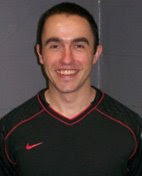Shifting ParadigmsFor most endurance athletes, the benefits of strength training are outweighed by the fear of gaining too much bulk, loss of flexibility and diminished ‘feel’ of their sport. Unfortunately this thinking keeps many endurance athletes from participating in a properly designed strength and conditioning program.
Many have a traditional ‘endurance training’ based paradigm, centered on volume of training and time spent training for the actual event itself. It’s all about wearing a badge of honour for the number of hours spent running, cycling or swimming. Unfortunately this is a pretty flawed approach, not least because there is a mass of research showing that volume of training is one of the main culprits of overtraining and injury incidence.
By and large the endurance community has overemphasised the benefits of endurance-based training and underestimated the benefits of strength training. Endurance atheletes will spend hours completing endurance sessions in the hope that they can squeeze a little bit of extra performance from their cardiovascular system, but are reluctant to spend just a couple of hours a week in the gym.
One heart, two lungs, lots of muscles!Part of the reason for the above is that many have forgotten about the huge potential that the musculoskeletal system has to offer to performance and pay scant regard to its training benefits. Let’s not forget that the only reason your cardiovascular system is involved in the first place is because of the demand from your muscular system; your muscles don’t move because of cardiovascular demand – the demand on the cardiovascular system is elevated because of muscular demand.
If the musculoskeletal system cannot handle the stress of thousands of repetitions (which is what happens when you are training for endurance) then you need to condition the musculoskeletal system first. In other words, you should program your body based on the movements it’s going to perform – not based on the cardiovascular system, which is an upside down method of programming!
Strength training in the gym can make a real performance difference via a direct ‘transfer of training’ effect into the event. Typically the endurance athletes that I’ve worked with have had so little structural integrity that a resistance training program to target their muscular weaknesses and imbalances had to be our first approach.
The fact is that for many endurance athletes, moving the body is the biggest problem – not their ability to transport oxygen! I’m currently working with a number of endurance athletes who have seen the light and are now benefiting from a structured strength training program. For years they’ve been focusing purely on improving their cardiovascular system but more often than not, they’ve broken down at some point during their season through illness or injury. Using a motoring analogy, they were trying to trying to put a new engine in a beaten up old car with worn out chassis and suspension. A better approach is to set to work on improving the chassis and bodywork first and tinker with the engine later.




